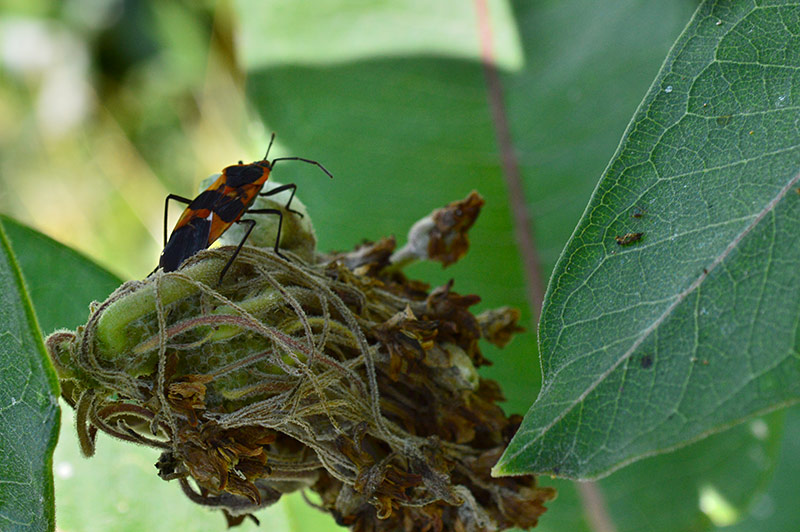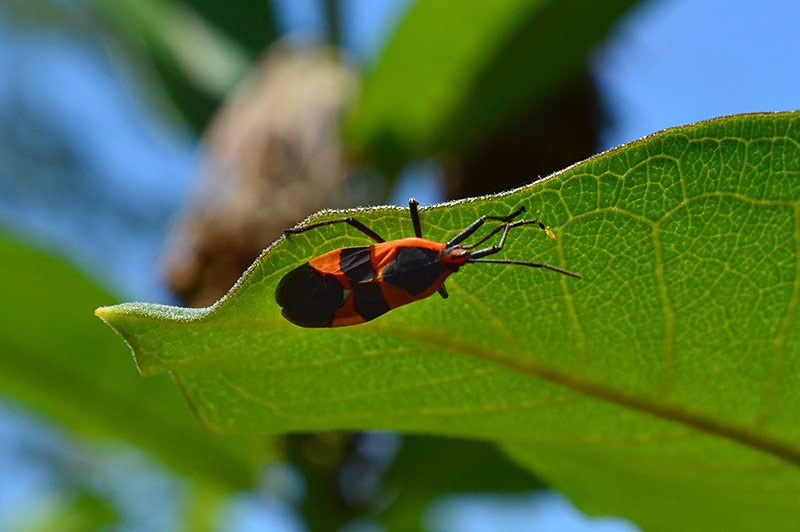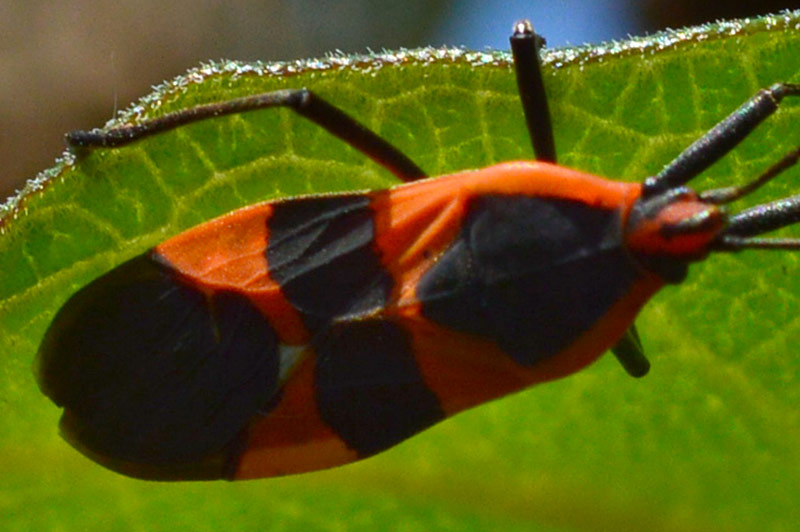In the second year of growing common milkweed (Asclepias syriaca), I not only learned more about the plant’s growth habit in a tended garden, but also about the variety of insects it draws. Like many gardeners in the past several years, I expanded my milkweed inventory to supply food and nursery space for the monarch butterfly. Like the swamp milkweed, the common milkweed attracted aphids, then ants, then lady bird beetles and sooty mold. However, this year a new resident arrived.

One day when studying the evolving drama of The Milkweed Diaries, I noticed a new bug. This one wore a pretty flashy palette of reddish-orange and black. Not that subtle. The mouthpiece was a proboscis, which is an indicator the bug feeds on sap. It also was just chilling toward the top of the plant, not participating in the balance of life being played out between the aphids, ants, and lady bugs on the leaves below. Naturally I grabbed a camera and snapped some photos of the unknown bug to ID it.

It didn’t take too long searching before I found it on The Internets. It is Oncopeltus fasciatus commonly know as the large milkweed bug. They can be found on milkweed plants in mid to late summer when seedpods are getting ready to form. If you take a closer look at this adult, there is a black band across its body. I used this to ID it as the Large Milkweed bug, instead of the similar looking Lesser Milkweed Bug (Lygaeus kalmii) which has a set of inward facing, orange brackets on its back.

Like the monarch butterfly, milkweed bugs ingest the milkweed plant and therefore accumulate in their bodies cardiac glycosides (cardenolides). These alkaloid toxins are dangerous if ingested by predators.
Unlike Lesser Milkweed Bugs, this guy sticks to the Apocynaceae (dogbane) family when looking for its next meal. Both adults and nymphs feed on milkweed pods and seeds.
Do They Harm Monarchs?
Most gardeners grow plants from the milkweed family with monarchs on the mind. Who wouldn’t love waiting on those lovely butterflies? So, as I was reading about the large milkweed bug, I wondered if it was a natural predator of monarchs.
From what I could find, the Large Milkweed Bug is a vegetarian. However, the Lesser Milkweed Bug will scavenge on insects as a adult, including Monarch larvae. I feel this is just another example of why it is so important to carefully research your garden guest before knocking them into that jar of soapy water.
Should They Stay or Should They Go?
Stay. Both large and lesser milkweed bugs do not oppose an immediate threat to milkweed. The feeding damage is minimal, and the bug’s life cycle and overall presence in the garden is short. They are one of its many pollinators. Booming populations on a plant may be an indicator of a plant that is otherwise stressed or lacking something it needs to grow.
References
Ohio State University Extension
Milkweed: Not Just for Monarchs